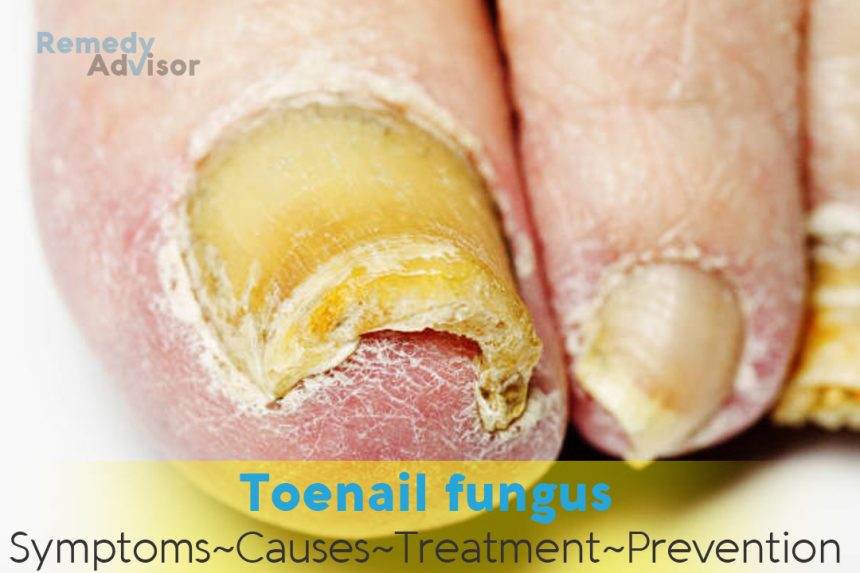What is it
The medical term for a fungal nail infection is onychomycosis (on-i-ko-mi-KO-sis), a long word to describe a persistent, nagging condition. Nail fungal infections seem to arrive unannounced. At first you may only notice a small white or yellow spot on your nail. Then, months later, your whole nail may be consumed by the fungi. Soon, the nail may turn yellow, gray, black, or brown. As the infection advances, the nail becomes brittle and can crack, sometimes breaking away totally from the nail bed.
Such infections are quite common, affecting between 10 to 12 million Americans of all ages, genders, and races. They primarily affect toenails, but sometimes fingernails, though rarely both at the same time. In most cases the infections are a nuisance that may cause embarrassment over the misshapen and unsightly nails. In a few cases the infection
Symptoms
- Dry, thickened, or discolored nail that turns white or yellow.
- Scaliness on the skin surrounding the nail.
- Pain while standing, walking, or running, which may be accompanied by blistering or swelling around the nail.
- Nail that has detached from the nail bed (rare).
What causes it
Fungal molds called dermatophytes are the cause of fungal nail infections. (Other types of dermatophytes are responsible for athlete’s foot and jock itch) But how nail infections are transmitted isn’t well understood. Nail infections are more common in people who have infections of the skin adjoining the nail. While warm, moist environments such as gym locker rooms or shower stalls can encourage the spread of skin infections, it isn’t evident that these lead to nail infections. Trauma to the nail appears to be a factor. Regular distance runners who inadvertently bump their toenails against the running shoe toe box on downhill runs thereby damaging the nail in the process are prone to the infection. In addition, people who remain on their feet for long periods of time while wearing tight-fitting shoes, such as waiters, policemen, and construction workers, are also more inclined to develop the ailment And people with compromised immune systems from HIV, AIDS, and chemo therapy may be more prone.
Nail infections also tend to occur more frequently with increasing age.
What if you do nothing
Fungal nail infections are harmless, but they are also unsightly and can persist indefinitely. Treating a fungal nail infection isn’t necessary unless you are bothered by pain or upset by the appearance of the nails. Owing to the possibility of side effects and the high cost of prescription medication, many people choose instead to live with the condition.
Home remedies
Topical antifungal medications do not work (the Food and Drug Administration no longer allows them to claim effectiveness), and home remedies haven’t been shown to work very well. Among those you can try are melaleuca (also known as tea tree oil and sold in heath-food stores), vinegar applied with a soft brush, Campho-Phenique (containing camphor and phenol), toothpaste applied with a toothbrush, and saline solution.
The best way to successfully treat a fungal nail infection is with one of several oral prescription medications. The preventive suggestions that follow may help keep you from developing the infection in the first place.
Prevention
Keep your nails clipped
Cut the nails straight and make sure they do not extend beyond the tips of your toes (or your fingers). If you have one or more infected nails, use a separate pair of clippers for infected nails and another for healthy nails. If you have diabetes, consult your physician before cutting your toenails.
Disinfect
After every use, sterilize pedicure and manicure tools by rubbing them with cotton balls soaked with alcohol. Allow them air dry for 60 to 90 minutes just before utilizing them again.
Be careful at the nail salon
Make sure the salon has an autoclave (a special heating device for disinfecting instruments) and that it is used after each treatment.
Keep clean and dry
Wash your hands and feet daily with soap and water and dry them well. Be sure to dry between your toes.
Use an antifungal foot powder
Avoid cornstarch because it encourages fungal growth.
Make sure footwear suck in air
Select leather shoes along with sufficient toe room. Have more than one pair and substitute your shoes daily to make sure they air out least 24 hours just before they are worn again. Likewise, elude socks made from nylon or polyester since they don’t absorb moisture as well as cotton or wool. In warm weather, using sandals might help avoid infections.







